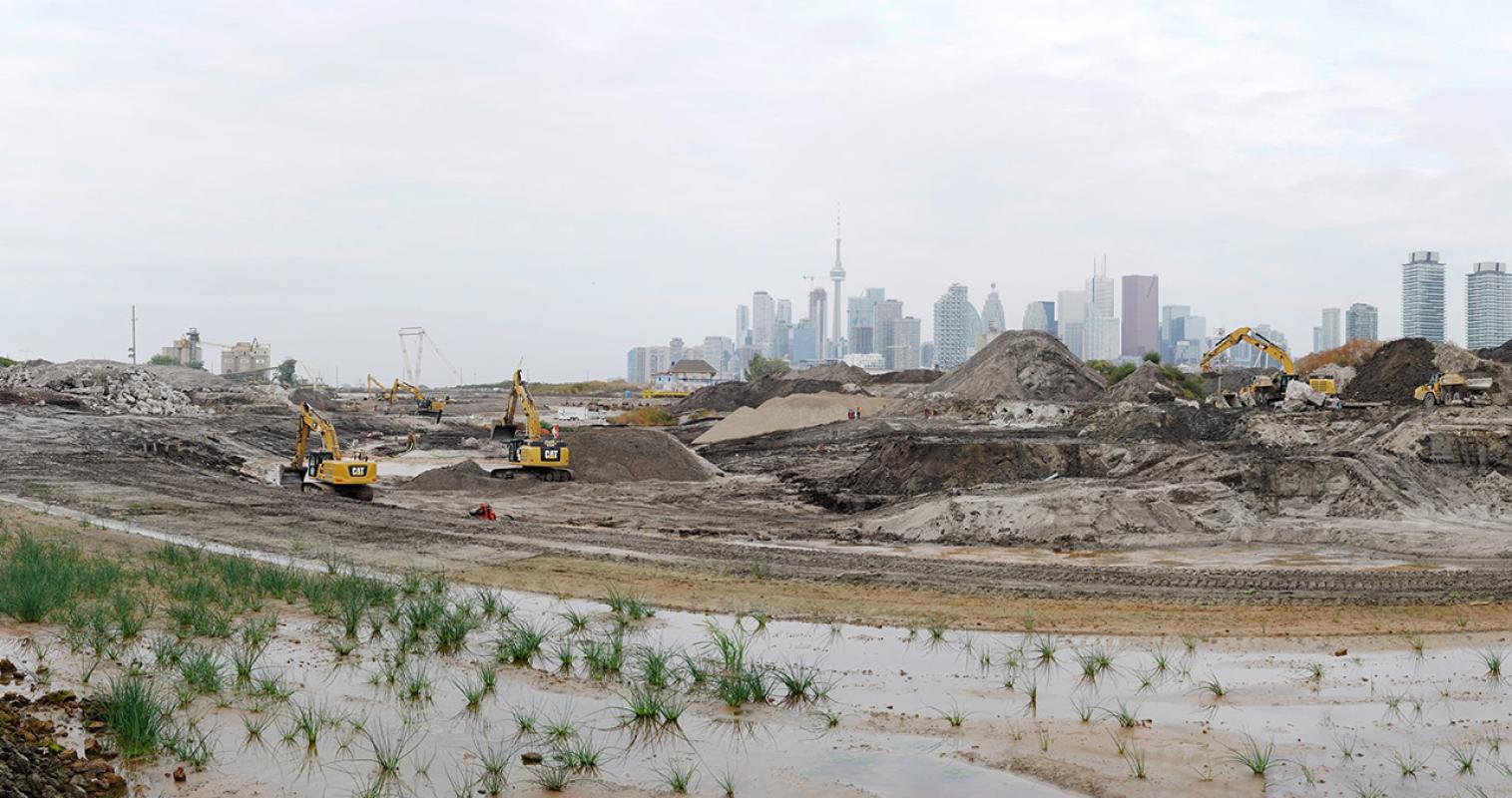100-Year-Old Seeds
Images copyright of Vid Ingelevics and Ryan Walker. Permission required for use.
Construction crews got a surprise when these plants sprouted up in the excavation of a new river valley in the Port Lands.
By: Netami Stuart
Over 100 years ago, fill was dumped into the biggest marsh in the Great Lakes to make the Port Lands. Now, we’re digging that up to recreate a natural, marshy mouth for the Don River – and we discovered something surprising: seeds from plants that would have been growing in Ashbridge’s Bay Marsh 100 years ago!
The Discovery
In a low-lying section of the future river valley, construction crews noticed some unusual plants had sprung up out of nowhere.
It’s not uncommon to see plants on the site, but these plants caught their eye because they looked a lot like plants that grow in wetlands, not like the scrubby weeds that have popped up elsewhere.
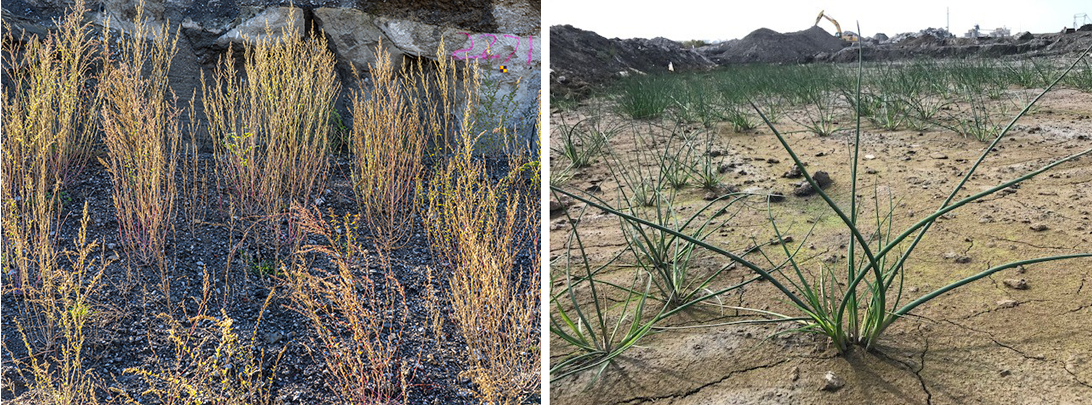
Left: the kind of weeds that frequently grow on the site. Right: plants growing from the historical seedbank are clearly different species from the regular weeds.
Returning Indigenous Plants to the Don River
In October 2022, project team members from Waterfront Toronto, MVVA, MinoKamik and EllisDon joined representatives for the Mississaugas of the Credit First Nation to mark the significance of returning some of these Indigenous wetland plants to the mouth of the Don River. Another group returned even more plants in October 2023. Several plants researchers grew from samples collected in the Port Lands – including a coyote willow and a bulrush – were replanted as part of these gatherings. In 2022, we planted the samples not far from where they were originally collected. In 2023, we planted them further west, in another future wetland.
2022
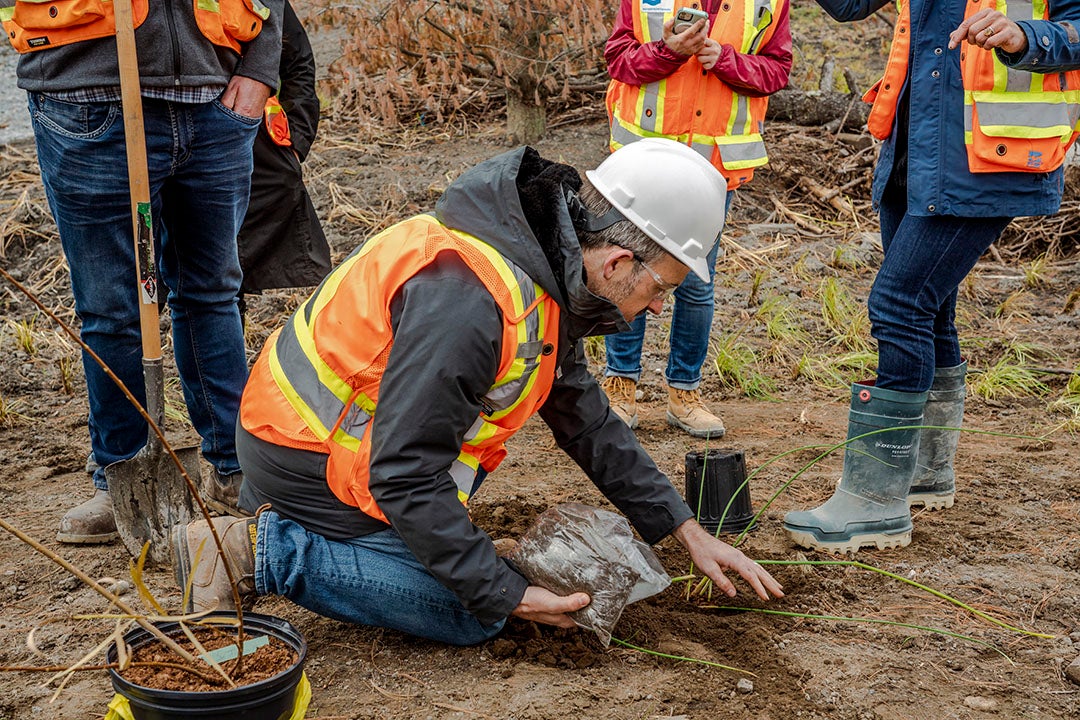
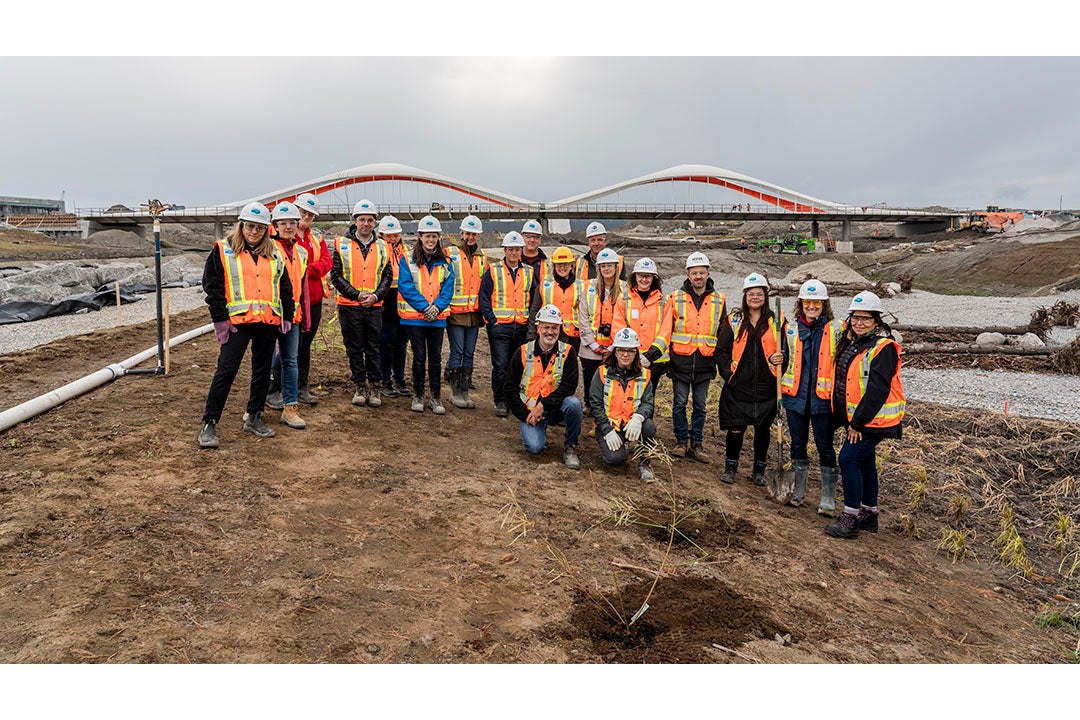
2023
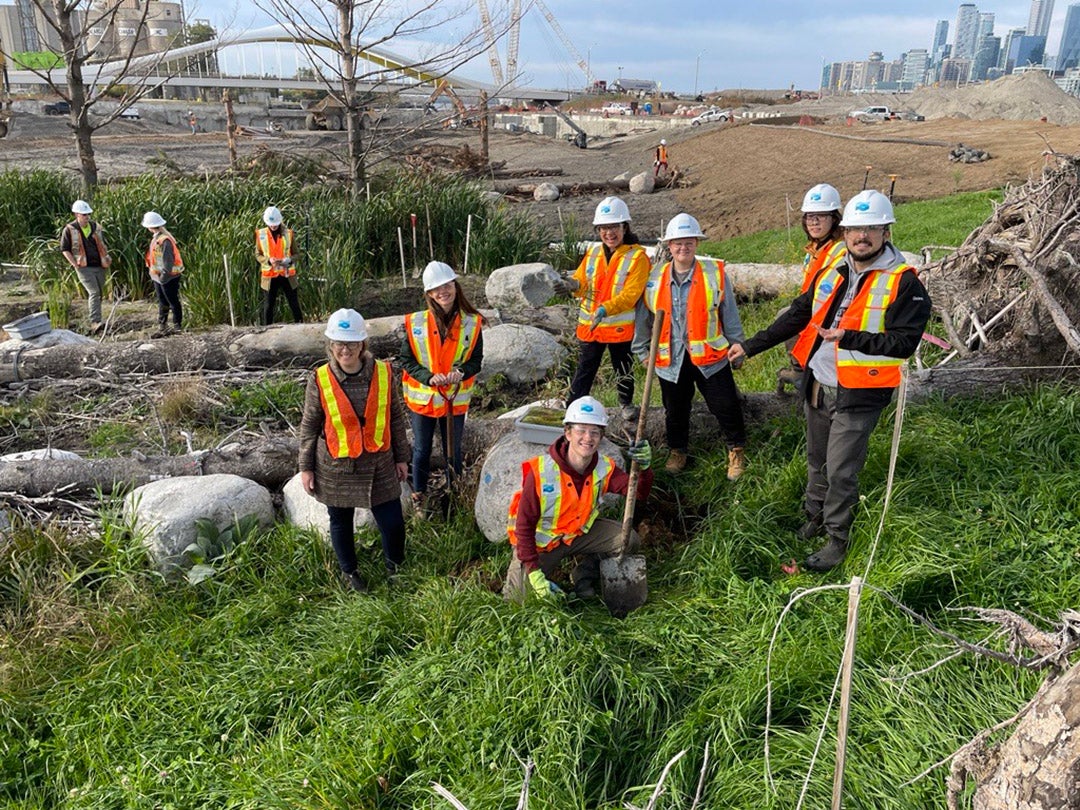
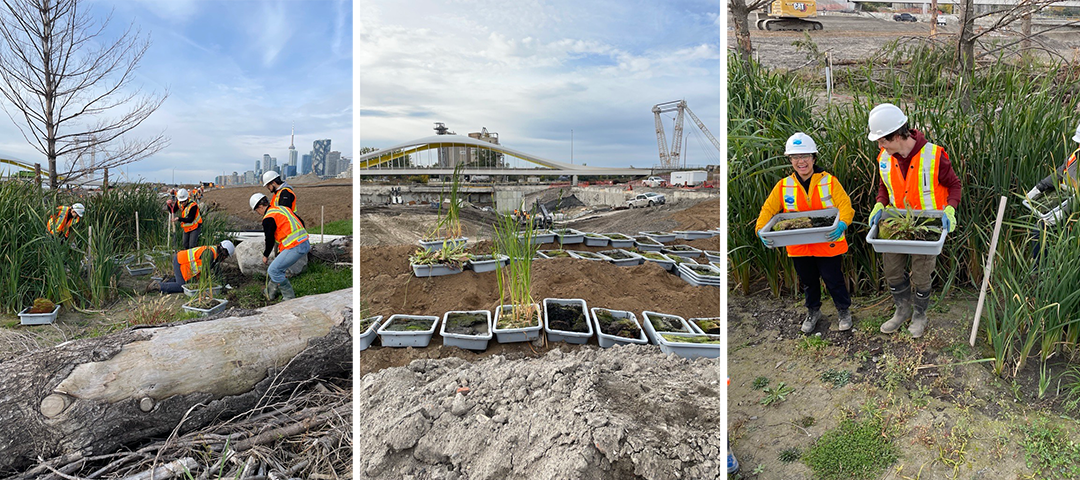
How do historical plants suddenly grow?
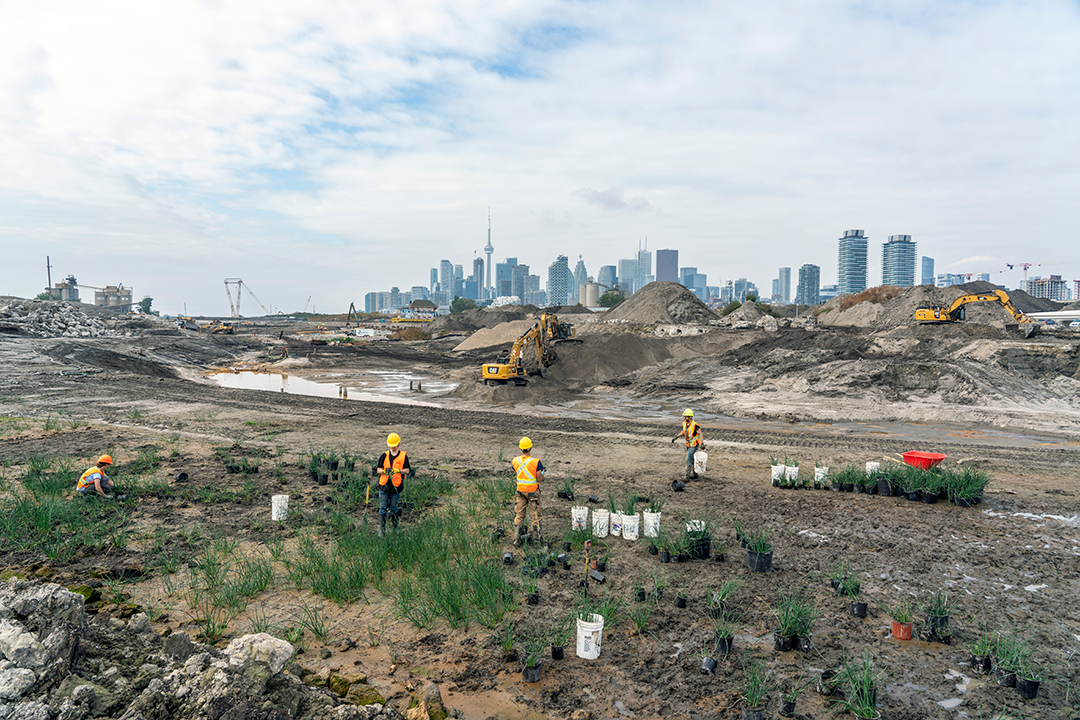
The plants were discovered in an area that was excavated and then left to sit for a few months.
As part of the Port Lands Flood Protection project, we’re excavating a one-kilometre channel to create a new mouth for the Don River. The new river runs through the Port Lands, which was originally created by filling in Ashbridge’s Bay Marsh. During excavation, we’re removing the soil that was used to fill in the marsh, as well as some of the peaty soil that was originally there.
In early 2021, we excavated 7 metres down in the area where we would eventually find the plants. It was deep enough to uncover the original soil of the marsh, but not remove it. By chance, this area was relatively flat with poor drainage, and wasn’t scheduled for further work for several months. Over the summer the weather warmed up, water accumulated in the peaty soil, and more-than-century-old seeds sprang to life!
What kind of plants are they?
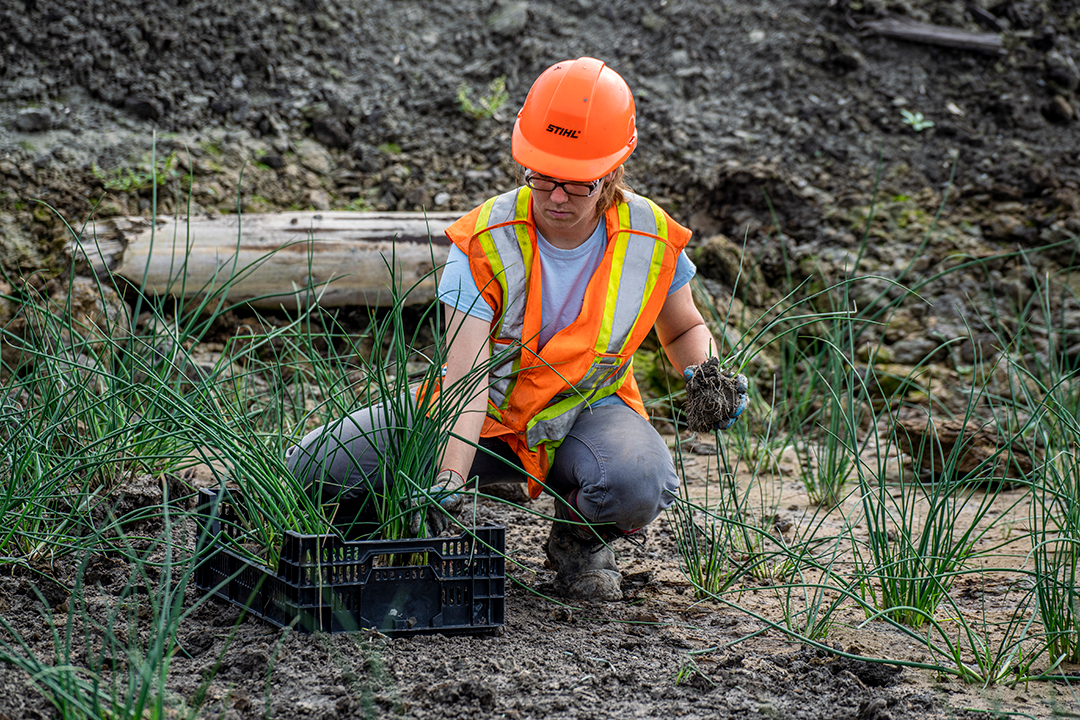
Upon realizing the significance of the plants, we worked with our partners at Toronto and Region Conservation Authority, project team members, MinoKamik, and others to relocate them and harvest any possible remaining seeds.
We were able to identify at least two species of leafy plants that grew. Hard Stem Bulrush and Cattails were growing well, so we transplanted them to Tommy Thompson Park nearby. The team also collected around 50 buckets of the surrounding soil, in the hopes that more seeds and species might germinate. These samples were taken to a lab at the University of Toronto, where they conducted genetic testing and other research. The team was able to grow many plants from seeds found in the soil. Those plants were returned to their original home near the mouth of the Don River in October 2023.
Native species and restoration ecology
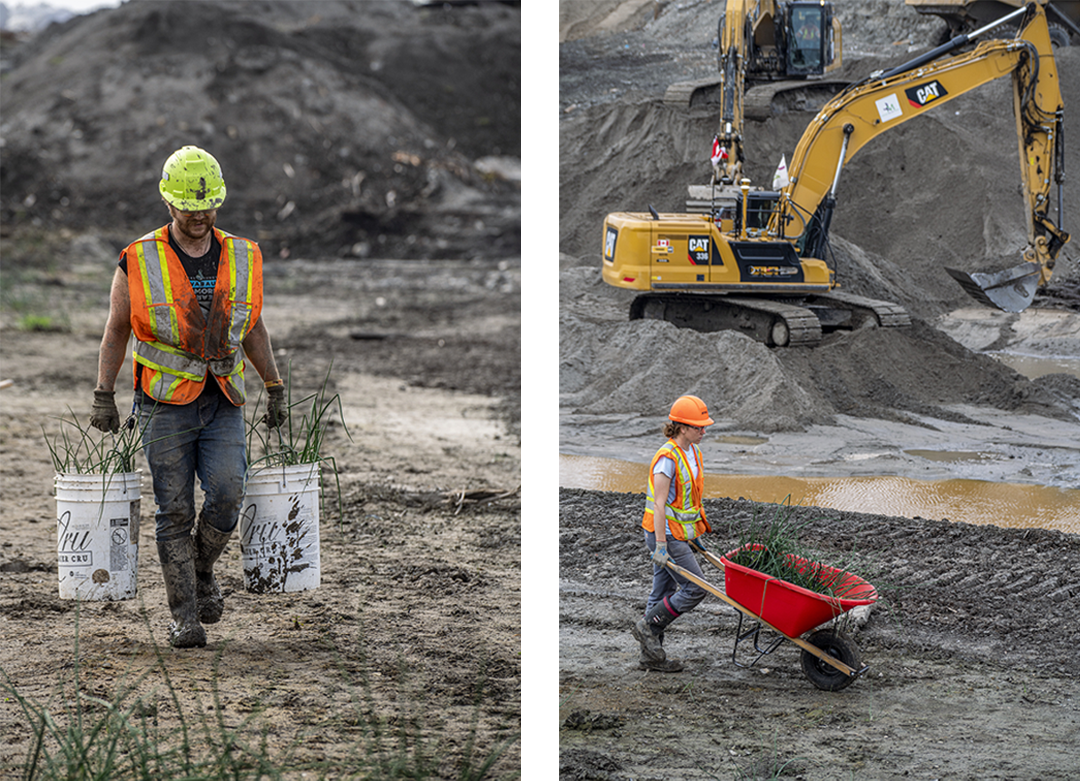
It’s rare that experts can study living plants from over 100 years ago, so we made a significant effort to relocate and preserve the plants for further study.
Lots of specialists are interested in the seeds. Tom Gludovacz, a horticulturist at the University of Toronto, is overseeing the buckets of soil and conducting genetic tests on the plants.
It’s possible that some descendants of these plants are still living around Toronto, likely on the Toronto Islands. It’s rare that you can compare a modern plant to a plant grown from pre-industrial seeds, so the discovery of these seeds was exciting.
Restoration ecology makes a big deal about the seed source of plants. Different source locations can impact how well-adapted a plant is to its local conditions. While we aren’t building the exact same ecosystem in the Port Lands that was once there, being able to include plants that were once thriving in that exact location certainly won’t detract from the genetic diversity of the restored river mouth. To see a list of all plants being used in the restoration, click here.
Old Plants in the Modern Day
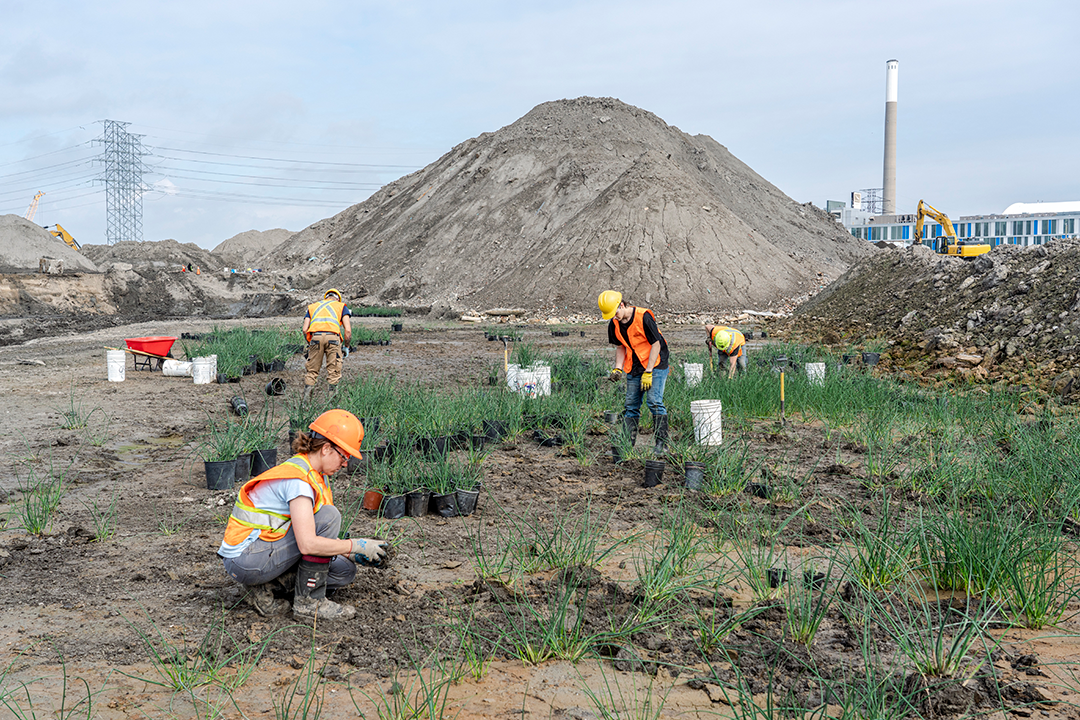
The historical plants were carefully repotted and relocated to either Tommy Thompson Park or the University of Toronto.
One challenge we faced in selecting plants for the river valley system in the Port Lands is that wetland plants are very sensitive to fluctuating water levels. Lake and water levels fluctuate much more now than they did at the turn of the twentieth century, so we had to reduce the palette of plants to those that are more resilient to changing water levels.
Only time will tell if plants adapted for the 1890s will be able to thrive in 2024 and beyond.

